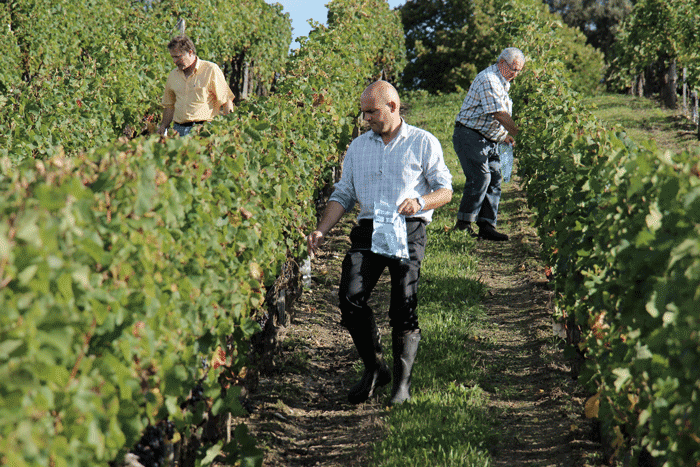So, you want to be a winemaker…?
Author: Gary Owen
To many wine drinkers and collectors, the narrative and history behind Bordeaux – and the very history of Claret itself – is one of power, authority and unadulterated politics.
However, what’s often missing in Bordeaux is discussion about the huge differences between specific and individual vineyard plots. While some may argue this is less relevant in Bordeaux than it is in other great vineyard regions of the world – Burgundy, for example – I would wager that those who make that argument haven’t spent much time getting mud on their boots studying the patchwork of vineyards that comprise Pauillac, St Emilion, or, dare I say it, the hinterland beyond – Cote de Castillion.
Mud on boots is certainly part of the deal when you visit VINIV’s operation at Ch. Lynch-Bages. Not only did I walk each and every one of the vineyards from which you can select fruit, but I had the chance to build my own blends, meet the vineyard workers and quiz the Ch. Lynch-Bages Technical Director who oversees VINIV winemaking. Quite an experience.
For me, what was most striking when blending my own wine, was that Bordeaux is so much a place of micro-climate: each row of vines has its own story, history and individual character which plays such a discernible part in the overall wine.
Take for example the fabulous Merlot vineyard ‘La Pierre’ in St Emilion. Just 1.9HA in size, it’s the third-highest vineyard in Pomerol and St Emilion, and is situated wholly on limestone (a limestone cliff at that, with a potentially perilous 150-foot drop into the surrounding vineyards). ‘La Pierre’ is surrounded by some of the most illustrious and highly regarded St Emilion Grand Cru properties – names that we all get excited about (but that bring fear to bank managers). For my blend, I found that this plot brings structured, vibrant, multi-dimensional Merlot. However, like the men who nurture it, it’s reserved, not to eager to impress and, as far as I tasted, will improve vastly with age and experience.
This both compares and contrasts to the ‘Grande Cathelie’ vineyard of Pauillac, which is perfectly placed at the epi-centre of classified-growth Cabernet vineyards. (From this site, spotting and naming 1855 classified Chateaux needs two people counting on both their fingers and thumbs.) For me, ‘Grande Cathelie’ brings to the glass the absolute essence of Claret – red and black hedgerow fruits, of course, but cigar box, pencil shavings, well-structured tannins and crisp fresh acidity. All that, and age-worthiness, breeding and finesse. None of these characteristics are accidental, but instead come from mature vines on great rootstocks, expertly tended and then vinified.
Building your own wine is a hoot; I would go so far as to say it’s the most enjoyable experience a fine wine drinker can have. But, personally, what was even more beneficial was increasing my understanding of what actually goes into the wine in that ends up in my glass. It’s not politics – its proper, real winemaking.
For more information on VINIV, get in touch with Gary at gary.owen@bbr.com or on 01256 247 900.




So how do I go about this venture please?
Hi Terrence, many thanks for your comment. I will ask one of the team to get in touch with you directly if you are happy for me to pass on your email address? Otherwise, please email Gary at gary.owen@bbr.com
Hi, are you only proposing this experience in the Bordeaux region ? or is this something you will extend to other wine regions worldwide ?
Dear Marie,
Many thanks for your comment. Currently, we are working with VINIV to offer this experience in Bordeaux only. Please let me know if you would like further information.
With best wishes,
Emily